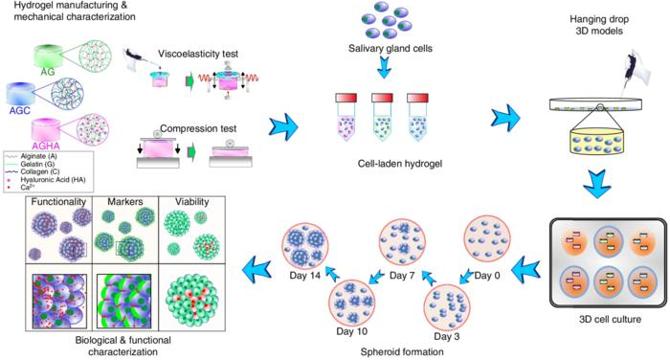Bioengineer
1w
176

Image Credit: Bioengineer
Breakthrough Hydrogel Technology Promises New Hope for Dry Mouth Treatment
- Scientists from McGill University have developed a groundbreaking hydrogel platform, AGHA, that mimics the microenvironment of human salivary glands for treating dry mouth conditions.
- The AGHA hydrogel enables the 3D culture of functional acinar cell spheroids, supporting cell viability and salivary functions over extended periods.
- Compared to other hydrogel variants, AGHA significantly promotes the formation of densely packed spheroids with high viability rates, crucial for salivary acinar cell function.
- Confocal microscopy and assays confirmed structural integrity, metabolic activity, and expression of critical salivary proteins within spheroids grown in the AGHA hydrogel.
- The spheroids displayed functional responsiveness to biochemical cues, demonstrating secretory capacity and dynamic cellular signaling pathways within the hydrogel system.
- The AGHA hydrogel allows for easy retrieval of intact spheroids, expanding its utility for clinical translation, drug testing, and molecular analyses with minimal cell damage.
- This hydrogel platform supports long-term studies of gland biology, disease modeling, and regenerative therapy development, showcasing its versatility and clinical relevance.
- By faithfully mimicking the salivary gland niche, the AGHA hydrogel opens new avenues for studying salivary dysfunctions and personalized medicine in a physiologically relevant setting.
- The development of the AGHA hydrogel marks a significant advancement in tissue engineering for restoring salivary gland function, offering potential for transforming treatment approaches for xerostomia.
- The integration of polymer chemistry and cell biology in this work presents a rational design approach that could be adapted to other organ systems, facilitating bioengineered tissue development and personalized therapies.
Read Full Article
10 Likes
For uninterrupted reading, download the app